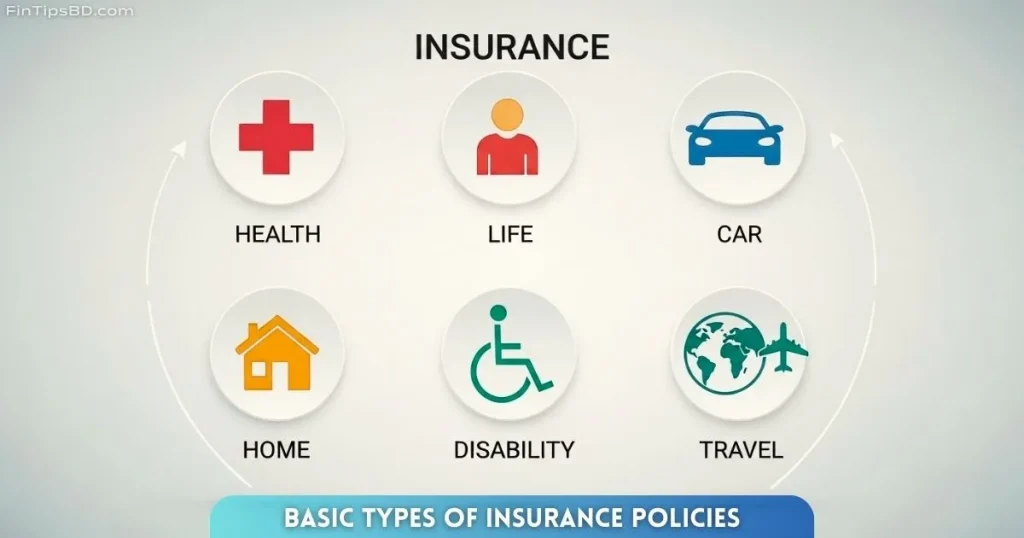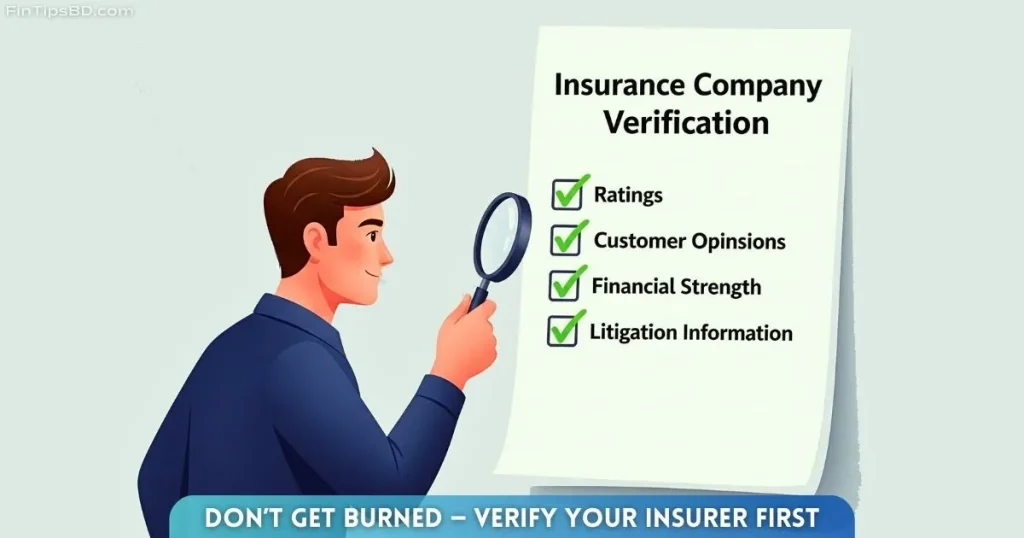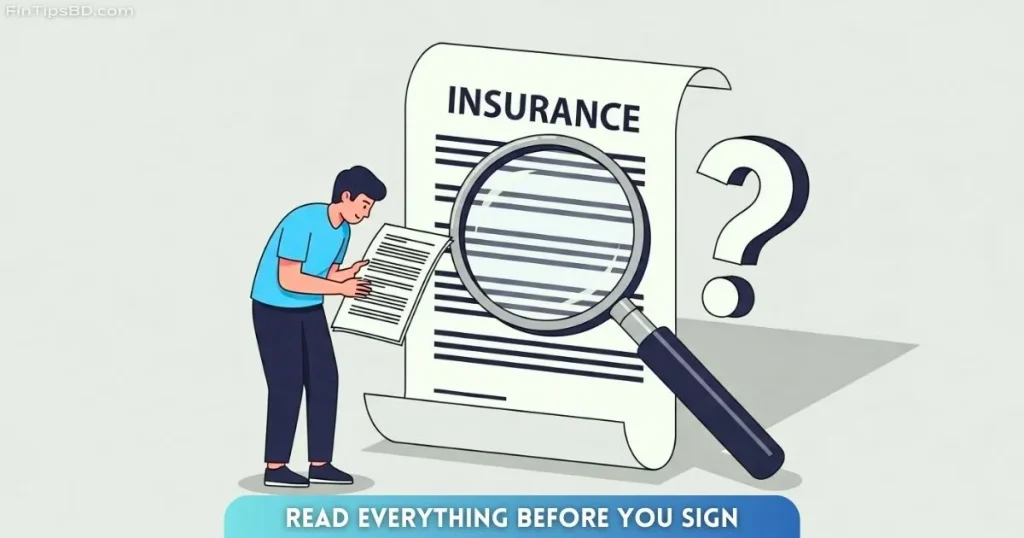Choosing The Right Insurance Policy – 7 Smart Rules That Save You Thousands

Most people only realize they’ve picked the wrong insurance policy when their claim gets rejected—or worse, when it doesn’t cover what they assumed it would. Choosing the right insurance policy isn’t about chasing the lowest premium. It’s about making sure your money, health, loved ones, and peace of mind are actually protected.
Here’s the deal: if you skip a few crucial steps while shopping for insurance, you could end up spending more for coverage that fails when you need it the most. The upside? With a bit of upfront planning, you can save thousands down the road and rest easier knowing you’ve got solid protection.
Let’s walk through how choosing insurance wisely really works.
Table Of Contents
1. Start with Your Actual Needs—Not Generic Advice
The first step—arguably the most important one—is to begin with your actual life circumstances. Forget what everyone else is doing. Insurance isn’t universal. What you need depends on your age, health condition, earnings, dependents, job situation, and future plans.
If you’re single and child-free, life insurance might not be urgent. But if your family depends on your income, having both life and health coverage becomes essential. Self-employed? You may need to think about disability or liability insurance.
Ask yourself:
- What am I trying to protect? (Is it my family, income, health, home?)
- What’s the worst financial fallout if I don’t have this insurance?
- Can I handle smaller risks on my own and just insure the big stuff?
When you’re clear on what matters most, you won’t fall for flashy policies that sound impressive but don’t actually help your situation. It’s about making smart, practical choices—not just buying every plan you see.
2. Learn the Basic Types of Insurance Policies

You can’t make a smart choice without knowing what’s out there. Before you can start choosing the right insurance policy, it’s important to understand the different types of insurance policies you might come across. Here’s a breakdown of the most common ones:
- Health Insurance: Covers medical bills like doctor appointments, hospital visits, prescriptions, and surgeries. Knowing the difference between health and life insurance is a key part of planning your finances.
- Life Insurance: Pays out a lump sum to your beneficiaries if you die. Term life lasts a set number of years (say, 20), while whole life lasts forever and builds cash value. Understanding life insurance vs health insurance helps you make informed decisions.
- Auto Insurance: Protects you from expenses tied to car accidents—damage, injuries, liability.
- Homeowners or Renters Insurance: Covers your home, belongings, and legal liabilities if something is stolen or damaged.
- Disability Insurance: Replaces part of your income if an illness or injury keeps you from working.
- Travel Insurance: Handles costs tied to trip cancellations, lost baggage, or emergency care abroad.
It’s not about buying every kind—it’s about knowing what each covers and whether it fits your situation.
3. Compare What’s Covered, Not Just What It Costs
Let’s be real: cheap insurance often ends up costing more. People buy the lowest monthly rate thinking they’re being frugal—until they find out the plan won’t cover a surgery, a wrecked car, or home damage like they expected. This is why knowing how to compare insurance plans is non-negotiable.
To get the best insurance coverage, don’t just look at the price. Look at the details:
- Deductibles: How much do you pay before insurance kicks in? Lower deductibles mean higher monthly premiums—but less out-of-pocket if disaster strikes.
- Coverage Limits: What’s the max amount the insurer will pay for a claim or during your policy period?
- Co-pays & Coinsurance: Your share of the bill after insurance pays its part. Co-pays are flat fees; coinsurance is a percentage.
- Exclusions: This is the fine print that says, “we won’t cover this.” Know what’s left out before you sign.
Here’s a real-world comparison: two health plans both cost $150 a month. One has a $1,000 deductible, the other $6,000. If you end up in the hospital, that $5,000 gap hits hard.
4. Don’t Skip the Background Check on Insurance Companies

An insurance policy is only as good as the company backing it. Think about it: you wouldn’t buy a car without checking the seller’s track record—so why would you trust an insurer without doing the same?
Before you sign anything, make sure you know what to check before buying insurance.
Here’s what to look into:
- Claim settlement ratio: This tells you what percentage of claims the insurer actually pays out. Higher is better—it shows they’re reliable when it matters.
- Unbiased customer feedback: Don’t just go by the polished testimonials on their site. Look at third-party review platforms and consumer protection agencies to get a real sense of how they treat customers.
- Complaints or legal trouble: If the company has a history of lawsuits or regulatory red flags, that’s a warning sign you shouldn’t ignore.
- Financial strength: Check their ratings from agencies like A.M. Best or Standard & Poor’s. A strong rating means the company is financially stable enough to handle big claims.
Bottom line? Paying a little more for a trustworthy insurer is worth it. A company with a poor reputation can delay or deny your claim, making the insurance claim process a nightmare. You want a provider that’s fast, fair, and transparent.
5. Understand Riders and Extra Coverage Options
Insurance policy riders are optional features you can add to a basic plan. They might cost more, but they’re designed to give you extra protection in specific situations.
Here are a few examples:
- A critical illness rider on a life insurance policy
- An accidental death benefit that pays out extra if you die in an accident
- Maternity coverage added to your regular health insurance
- A waiver of premium, which means your payments are paused if you become disabled
The key here is balance. If a rider protects you from a real, likely risk in your life, it might be smart to add it. But if it sounds fancy and doesn’t apply to your situation, skip it. Don’t let a salesperson convince you to pile on features you don’t truly need. Always ask questions and read the details so you’re not paying for fluff.
6. Match the Coverage and Term with Your Life Plan
Buying insurance shouldn’t be random—it should tie into your long-term financial goals. This is where tips for buying insurance really come into play.
Ask yourself:
- How long do I actually need coverage? If you’ve got young kids, a 20-year term life plan might be enough to support them until they’re grown and independent.
- How much coverage is right? A common rule is 10 to 15 times your annual income for life insurance, but that depends on your loans, bills, and family needs.
- For health insurance, do you only need hospital stays covered, or do you want a full package that includes checkups, maternity, and outpatient care?
Here’s what to avoid: being under-insured (leaving you financially exposed), or over-insured (wasting money on coverage you won’t use). Many providers offer online calculators—use them. Plug in your income, age, family size, and debts to see what actually fits your situation.
Remember, choosing the right insurance policy isn’t about having the most expensive or complicated plan. It’s about making sure your coverage lines up with your life and financial goals.
7. Don’t Skip the Fine Print—Read Everything

Nobody enjoys reading the fine print—but skipping it can cost you big. Hidden in the details are rules and conditions that could either save you money or completely block your claim.
Here are some of the most common traps people miss:
- Waiting periods: Some policies won’t cover you right away. For example, health or maternity plans often make you wait 30 days—or even longer—before certain benefits kick in.
- Pre-existing condition exclusions: If you had a health issue before buying the policy, it might not be covered at all.
- Reasons claims can be denied: Look for a list of scenarios that would make the insurer reject your claim. This is one of the most critical steps in the insurance claim process.
- Missed payment rules: Some policies will lapse if you skip a payment—and reinstating them isn’t always easy.
Read every line. Seriously. If something doesn’t make sense, ask questions like:
- “What does this policy actually cover?”
- “What situations are never covered?”
- “Can the terms of this policy change later on?”
- “What documents will I need to submit a claim?”
And here’s a pro tip: if an insurance agent avoids giving you clear, honest answers, walk away. If they can’t explain the product, they shouldn’t be selling it.
Bonus: Review Your Insurance Every Year
Life doesn’t stay the same—your insurance shouldn’t either. What worked for you a few years ago might not make sense now. That’s why reviewing your policies regularly is a must if you’re serious about choosing insurance wisely.
Here’s when to do it:
- Got married or divorced? Update your life insurance beneficiaries.
- Bought a new home? Make sure your property is properly insured.
- Changed jobs? You might have new benefits—or lose old ones. Double-check that your new plan doesn’t leave gaps.
At least once a year, do a quick review. Cancel what you no longer need. Upgrade coverage if your life has changed. This helps you avoid wasting money and makes sure you’ve got the best insurance coverage for where you are right now.
Final Thoughts
Choosing the right insurance policy doesn’t have to be stressful or complicated. It just takes a bit of thought, a few smart comparisons, and a willingness to ask the right questions.
Stick to these seven rules, and you’ll steer clear of the usual traps, skip overpriced policies, and get the kind of coverage that’s actually helpful when things go wrong.
This isn’t about living in fear. It’s about being ready. Real insurance gives you peace of mind and keeps more of your money in your pocket when life throws you a curveball.
Disclaimer : This article is for general informational purposes only and does not constitute financial, legal, or professional insurance advice. Always consult with a licensed insurance advisor or financial planner before making decisions about insurance coverage.
